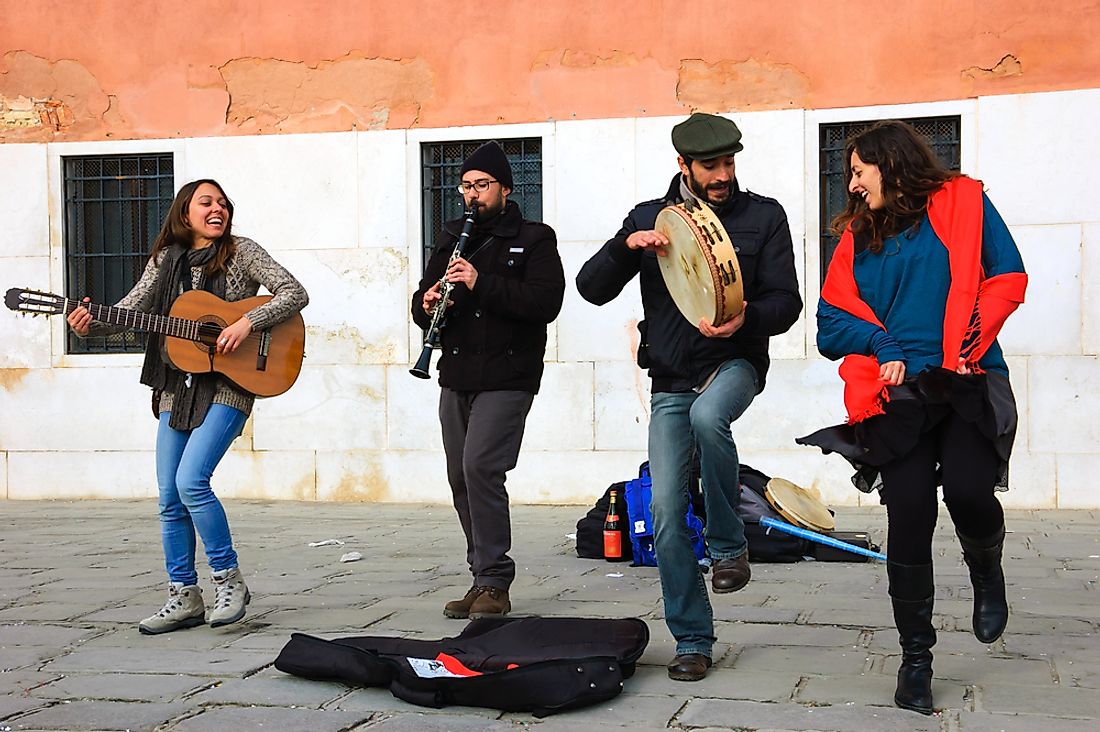Largest Ethnic Groups Of Italy

Around 8% of Italy’s population identify as one of the numerous non-Italian minorities, with Romanian Italians being the largest of the minority groups. The dominant ethnic group in Italy is the native Italians who mainly speak the Italian language. Minority groups in Italy are majorly a result of immigration and settlement from other countries. Most of these immigrants went to Italy seeking employment opportunities.
Italians
Nearly 92.0% of Italy’s population is Italians making it the largest ethnic group in the country. Native groups in the Italian Peninsula were the Etruscans while groups such as Greeks, Germans, Jews, Romans and Celts occupied the Peninsula in medieval times. Descendants of the indigenous groups and the settlers make up the modern-day Italians. In the Southern part of Italy, Greek-Italians and Albanian-Italians are found while the North part is dominated by the French-Italians, Slovene-Italians, and German-Italians. Of all the occupations in the Italian Peninsula, the Romans influenced the culture of Italians the most. With time, different provinces of Italians developed their culture and dialects, a diversity which is still evident in the modern day Italy. Most Italians profess to the Roman Catholic religion while a small number profess to Judaism or Protestantism or migratory Islam. Notable Italians have made major contributions in the fields of culture, arts, language, science, and literature. Famous Italians are Leonard da Vinci for his contributions in architecture and paleontology and Galileo Galilei, a dominant figure in astronomy.
Romanian
1.8% of the total population in Italy are Romanians. The presence of Romanians in Italy is attributed to immigrations to Italy by Romanian citizens who began in the 1990s. The first phase of immigrants was fleeing persecution in Romania, while the second phase flocked to Italy for better employment opportunities and improved standards of living. A large number of Romanians in Italy are Christians more specifically Orthodox Christian. Roman Catholic and Protestant make up a small number of Romanians.
The relationship between Italians and Romanians is one of mistrust. Romanians are blamed for illegal and criminal activities. A particular event in October 2007, where an Italian woman was killed in a violent murder by an alleged Romanian immigrant, sparked a significant outcry from Italians. Proposed legislations were made to allow the government to remove certain EU citizens it deems a threat to Italy’s security. Although the legislation was not eventually enforced, profiling of Romanian citizens as criminals continues in Italy. Romanians in Italy are characterized by a strong link to their culture and language. The Romanian presence in Italy is attested through over 200 Orthodox Churches, a political party, and numerous Romanian associations. There is also a Television Station that broadcasts in the Romanian language in Italy.
Maghrebi and Arabic
Maghrebi and Arabic both have a share of 1.1% of the total population in Italy. The majority of the people from these two groups are immigrants from Arab countries such as Tunisia, Libya, Syria, Morocco, Lebanon, and Egypt. There existed Muslim communities in Italy in the medieval era, whose presence dwindled as a result of various conquests. Somali asylum seekers in the 20th century to Italy sparked a wave of Muslim immigration. The dominant religion practiced by these ethnicities is Islam, more specifically the Sunni branch of Islam. The Maghrebi Arabic communities have various associations.
Albanian
0.8% Albanians make up the total population of Italy. Albania and Italy had long close ties in medieval times, mostly through military assistance given by Albania to Italy. Some Albanians, fleeing the occupation of Turks, settled in Italy and established Albanian communities mainly in Southern Italy. These communities still inhabit parts of modern Southern Italy such as Sicily, Calabria, Campania, Molise, and Abruzzi. Arberesh language is common among Albanians in Italy, with different dialects used in various villages. The Albanian community has influenced festivals and celebrations in Italy. The primary religion of the Albanians is Christian Catholic.
Conclusion
Other ethnicities found in Italy by share of the total population are Han Chinese (0.3%) and Ukrainian (0.3%). Italy has been increasingly receiving immigrants seeking asylum, especially from countries in the Sub-Saharan Africa. These immigrants have the potential to affect Italy’s demographics to a small extent. The Muslim population in Italy is projected to increase steadily in Italy and other parts of Europe.
Largest Ethnic Groups Of Italy
| Rank | Ethnicity or Nationality | Share of Italian Population |
|---|---|---|
| 1 | Italian | 92.0% |
| 2 | Romanian | 1.8% |
| 3 | Maghrebi and/or Arabic | 1.1% |
| 4 | Albanian | 0.8% |
| 5 | Han Chinese | 0.3% |
| 6 | Ukrainian | 0.3% |







